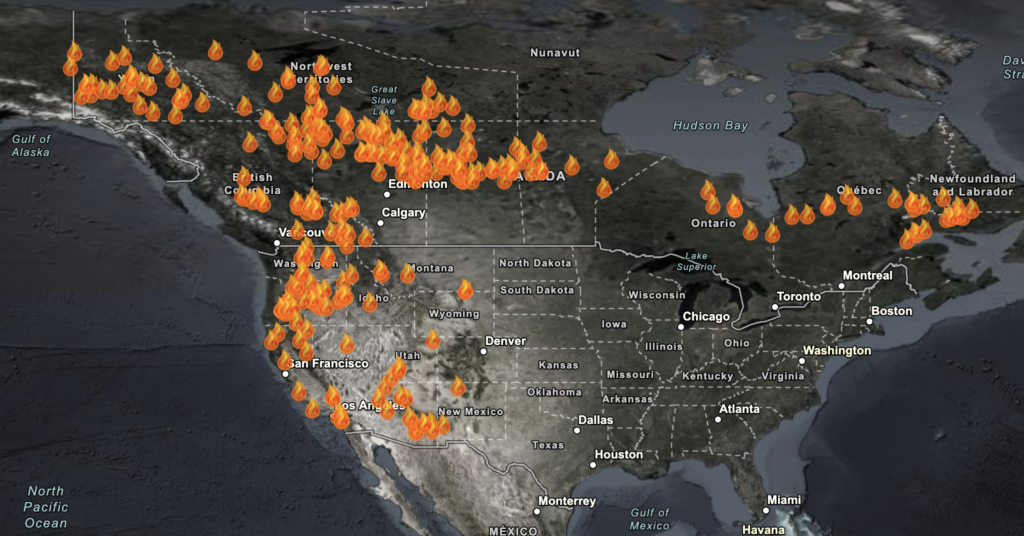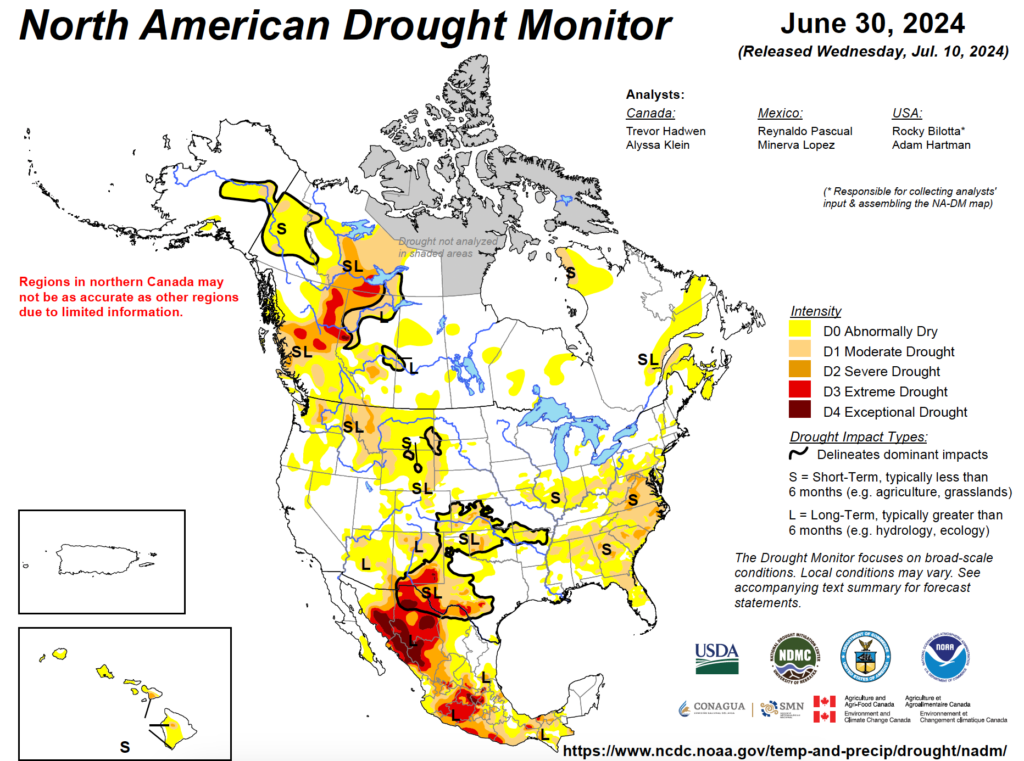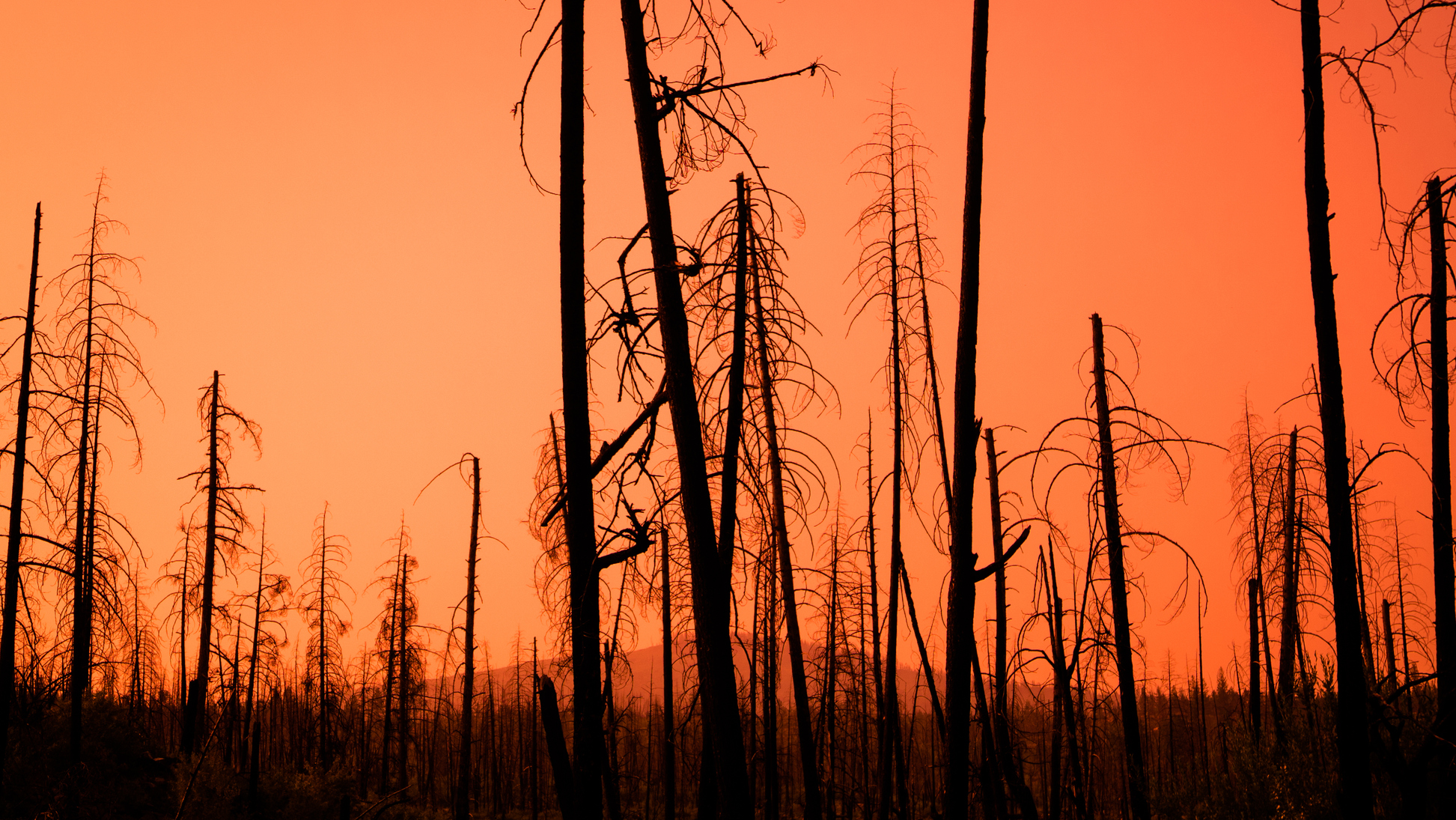Increasingly our wild lands are ablaze.
On Thursday, I used a fire mapping tool from NASA and the US Forest Service to garner a current image of active North American wildland fire. Fig. 1, below, indicates that these now pocket vast stretches of the American West, and nearly every Canadian province.

The widespread severe wildfire is attributable, at least in part, to climate-induced warming – including higher-than-normal night temperatures that promote round-the-clock conflagration expansion. In northern reaches, moreover, the risk is compounded by “zombie fires” that burn through the winter as “porous peat and moss ground cover . . . act as underground fuel” – even when surfaces may be covered in snow.
Persistently high temperatures trailed by intense wildfire is not, of course, a uniquely North American problem. Indeed, by one account, the globally-averaged temperature hit an all-time high for the period of accurate record-keeping this Monday, topping the prior record established just the day before. Researchers recently found, for instance, that over the 12-month period ending May 15, 2024, some “6.3 billion people (about 78% of the global population) experienced at least 31 days of extreme heat . . . that was made at least two times more likely due to human-caused climate change.”
Climate-driven heat causes and exacerbates drought, and drought amplifies the risk of wildfire ignition, persistence and severity. By the end of June 2024, for instance, much of the North American northwest was characterized as either abnormally dry, or else in moderate, severe, or extreme drought. Figure 2.

These current conflagrations commenced, continued, or coincided with last week’s Republican National Convention (RNC). Nonetheless, participants might not have made the connection to our industrialized society’s to-date over-reliance on fossil fuel. Not once during his exceedingly long acceptance speech did Donald Trump even mention the terms global warming,” “climate change,” or “wildfire” – nor even, for that matter, “the environment.” He did, however, employ the word “great” some 82 times (counting also “greater,” “greatest,” and “greatness”) but then, I digress.
At a June rally in Chesapeake, VA, Trump cavalierly dismissed the risk that unabated emissions impose on the nation, stating: “[g]lobal warming is fine. In fact, I heard it was going to be very warm today. It’s fine.” But at the RNC, Trump steered entirely clear of the issue, so keen was he not to call into question his fundamental commitment — now also enshrined in the RNC platform — to “drill, baby, drill.”
Fossil fuel boosterism did not always define the metes and bounds of Trump’s thinking concerning energy and the environment. In late 2009, for instance, in a full-page ad right before the 2009 Copenhagen Climate Summit, Trump and other self-described business leaders urged the federal government to “strengthen and pass . . . meaningful and effective measures to control climate change.” Trump and other signatories implored then-President Obama not to “postpone the earth,” warning:
If we fail now, it is scientifically irrefutable that there will be catastrophic and irreversible consequences for humanity and our planet. . .[W]e must embrace the challenge today to ensure that future generations are left with a safe planet and a strong economy. Please allow us, the United States of America, to serve in modeling the change necessary to protect humanity and our planet.
Turning back to our ignoble reality: Vast reaches of Oregon are now ablaze.
The National Weather Service has issued red flag warnings to over a half million Oregonians, since “high temperatures, very low humidity and strong winds” have combined to heightened risk,” according to a New York Times account. Moreover the Oregon Fire Marshall reported that, as of Wednesday, the Agency is “working with every tool we have to protect people and property,” and that “the Oregon structural fire service, our out-of-state firefighters, and our wildland partners [already] are working relentlessly around the clock.”
Active wildfires across Oregon and Washington now cover more than a million acres.
A report out today indicates that 43 active wildfires across Oregon and Washington now cover more than 1 million acres. The Oregon DEQ has issued air quality advisories for Grant, Wheeler, Crook, Deschutes, southern Umatilla, southern Morrow, Klamath, eastern Douglas, northern Harney, and northern Malheur counties. And we are, at best, only half-way through the present fire season – assuming the term retains any salience in this new era.
In Canada, the picture is even less rosy. Over 175 wildfires now rage across Alberta, with thousands of persons evacuated from their homes. Officials recently needed to evacuate both Jaspar National Park and the town bearing its name immediately to its west. The Fairmont Jasper Park Lodge, “a well-known resort in the town,” is now ablaze. Canadian officials predict that this year’s fires may prove to be even worse than the 2023 record-breaking season, whose smoke recurrently blanketed vast reaches of the Midwest and Eastern seaboard.
I’ll drive down soon, from Eugene, Oregon to Hayward, California, to help host our August 7 public hearing on the critical question, What More Should the United States Do on Climate? See here, for details.
The route, near its end, crosses Big Chico Creek. That creek drains Upper and Lower Bidwell Park. I used to run, cycle, and hike through Upper Bidwell Park. One July there, a few years back, while hiking to a waterhole, I noticed a large Great Horned Owl perched on a low branch; with piercing yellow eyes she stared through me.
Global warming is not fine.
On Wednesday, following weeks of intense, climate-induced heat, Upper Bidwell Park was torched by an suspected arsonist operating on a bone-dry woodland. CalFire reports that the Park Fire has simply exploded in size and strength, with 164,000 acres of the park and points to its northeast already ablaze. The fire has become California’s largest, by far, and yet it is now only 3% contained. The fire is moving fast. People in its path — perhaps all the way to Burney — need to evacuate. The Butte County Evacuation Zones map is here.
With all due respect, climate climate is no hoax. Neither is it material suitable for a jokester. Simply put, global warming is not fine. We need to think and do much more.


